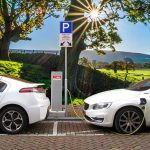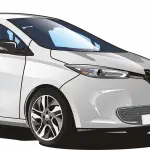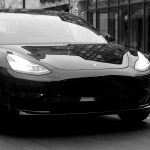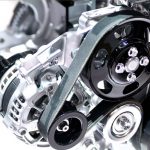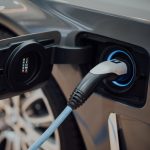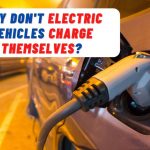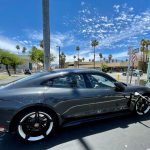Last Updated on August 26, 2022 by
An electric vehicle (EV) generates more torque than a gasoline-powered automobile within a specific timeframe.
An electric vehicle’s motor bypasses the lengthy process involved in internal combustion engines (ICE) to move the wheels. It generates torque instantaneously the moment you push the accelerator thanks to its relatively simple design.
Why Do Electric Motors Lose Torque at High RPM?
The EV’s motor produces the power to turn the wheels by passing an electric current through its coils within a magnetic field. The more the windings and greater the capacity of the battery the better is the acceleration.
An ICE on the other hand generates torque by combustion of fuel to move the pistons and turn the crankshaft. The crankshaft transfers this power to the wheels via the transmission.
This process involves a time lag as the vehicle needs to rev up before it can gain the momentum to get into motion. An electric vehicle in contrast roars to life at full throttle without any delay as it transfers power directly to its wheels.
However, there’s a catch. The torque is inversely proportional to the speed of the vehicle measured in revolutions per minute (RPM).
The age-old advice of slowing down when going uphill or while carrying a load is due to this reason. It means the quick acceleration is not sustainable over a period.
The electric motor’s rotations also generate a counter electromotive force (EMF).
The “back EMF” kicks in as the RPM increases after a certain duration of time has elapsed. It resists the supply voltage which slows down the EV motor’s torque generating capacity.
So the reason that electric motors lose torque at high RPM is:
- Torque reduces as the speed increases
- The EV motor generates a back EMF impeding the supply voltage
Do Electric Motors Have More Torque Than Diesel?
Yes, electric motors generate more torque than diesel engines. Imagine a row of vehicles including electric and gas and diesel-powered vehicles at a red light at a busy intersection.
The light changes to green after some time and the EV zips ahead of the pack in an instant. You wonder if an EV’s motor packs more power than a conventional ICE automobile.
Well, not exactly. It’s the EV’s superior torque or rotational force that moves a car from a stationary position, which makes a difference.
The more the torque the better is the acceleration capacity of a vehicle from a stationary position.
An EV’s motor has a unique capacity to produce maximum torque at zero RPM.
The rotor within the motor is connected to a single gear and the acceleration is instantaneous when you press the pedal. What’s more the EV’s torque does not have to contend with the thousands of parts in a diesel-powered vehicle.
The electric motor is also lighter which boosts its torque considerably. So you don’t have to worry about friction and oily soot.
Nor do you need to have any concern about smelly and toxic exhaust fumes poisoning the environment.
A diesel engine on the other hand has to shift to a lower gear to generate the torque to gain momentum.
An electric motor is not impeded by this condition.
So electric motors outperform diesel engines in terms of torque as:
- An EV’s motor is able to generate torque at zero RPM
- An electric motor is lighter than a diesel engine
- The motor works on a simpler and direct principle to generate power
What Is an EV Torque Curve?

- Torque is a twisting force that is applied at a distance.
- The torque of an engine is measured in Newton meters (Nm) or pound feet (lb-ft) to denote its pulling capacity.
- The torque curve plots an engine’s speed and its torque or the rotational capacity on a graph.
- The speed is measured in revolutions per minute (RPM) of the rotor in an EV’s motor or the crankshaft in a gas-powered engine, as it rotates around its axis.
- Torque is inversely proportional to speed after a certain time lag. So the more the speed the less the torque and vice versa.
- A gas-powered vehicle’s torque curve rises gently as the engine slowly builds power.
- An EV’s motor’s curve on the other hand begins from peak torque capacity at zero speed and then drops off as the speed increases.
- This torque generation capacity loses force after the power output reaches its maximum range.
- In an EV motor, the back EMF also reduces its torque.
What Is Instant Torque?
The EV motor can achieve maximum torque from zero revolutions per minute (RPM). This phenomenon is known as instant torque.
There’s no clutch or gearbox involved and the motor directly powers the wheels without having to go through any intermediary.
This is why you are thrown back in your seat when you hit the pedal to accelerate while driving an EV. The capacity enables an EV to get off the blocks in the blink of an eye, something which no gas-powered vehicle can aspire to do.
Tesla Electric Motor Torque Curve
A Tesla’s torque generation capacity does not tail off as quickly other EVs. The secret lies in its motor design.
- The motor connects to the battery via a drive unit which regulates the torque, speed and power by controlling the voltage and current.
- An onboard computer runs this process to ensure that the motor functions at an optimum level to avoid overheating.
- A Tesla’s motor is quite efficient in its power distribution, using about 60% of electrical energy generated to gain momentum.
- A gas-powered vehicle uses only about 20% of the power generated to move the wheels considering the loss of energy in the combustion process.
How Much Power Does an Electric Car Have?

Electric vehicles can cover 100 kilometers with 15 kilowatt-hours (kWh) of energy on an average. The power output depends on the motor’s size and the battery’s wattage.
The power denotes the amount of energy produced in a given timeframe. This has a bearing on how much load will the car be able to carry.
- Can it go uphill on steep inclines?
- Can it traverse through muddy tracts?
- Can it carry heavy loads?
For example, the Tesla Model S can zoom to 100 kilometers per hour from a standing position in an astonishing 1.98 seconds courtesy its 100 kWh battery. It performs great in going uphill however the car won’t be able to pull tons of metal or produce.
As with any engine, the EV motor does not use all the energy it produces. Some energy is lost due to heat and as the battery “ages.”
FAQ Relating to Electric Vehicles and More Torque
Do Electric Cars Have Higher Torque?
Electric cars have considerably higher torque than gas or diesel-powered vehicles. Electric cars are well known for shooting off like an arrow from a standing position.
This quality is an expression of its torque.
An EV’s motor can touch its peak torque capacity with zero speeds. This is possible due to:
- Battery capacity
- Electric motor design
- Direct application of force
The torque or twisting force of an EV’s motor is not dependent on gears and transmission. A powerful battery of more than 100 kWh runs the rotor within the EV motor.
The rotor is connected to a shaft that provides the momentum to the car’s wheels. The transfer of power is direct and without the need to assemble pistons and cranks to generate the mechanical force to move the vehicle.
A single gear connected to the rotor ensures that energy is provided to the wheels the moment you press the pedal. So there’s no need to rev up the car or to change gears after turning on the ignition.
An added advantage is that the rotor can also operate in the reverse direction and function as a generator. The motor drives the wheels while you are pushing the throttle and the wheels drive the motor when you slow down.
This phenomenon is known as regenerative braking.
How Do Electric Cars Get Instant Torque?
A battery already has the energy stored within it which is instantaneously transferred to the wheels via the motor.
Gas-powered vehicles on the other hand have to first generate the required energy before it can be transferred to the wheels via the transmission.
So there’s no delay involved after you power the electric vehicle. All that’s needed is a fully charged battery, and you are first out of the gates.
The right voltage and current take the place of the gears and drive to generate the torque. If you want more power and torque you don’t need to add leverage in the form of gears or a bigger motor with more pistons.
The torque’s value is dependent on the current and the coils in the motor.
An electric car comes with an inbuilt controller to regulate the current and avoid overheating of the windings. This is a vital feature as the electric motor needs frequent cooling similar to how the radiator works in a gas-powered vehicle.
Why Does Tesla Have More Torque?
An electric motor’s functioning is entirely different from an ICE vehicle. The torque is more readily available in electric cars than it’s accessible for gas-powered vehicles.
So how does it work?
- The motor starts off with full power when it’s connected to the battery source providing the vehicle with all the torque it needs to gain momentum from a state of inertia. Say goodbye to the clutch and gearbox.
- The current flowing through the electric motor initiates an electrical charge which causes an armature in the motor to rotate.
- So when you press the accelerator the desired speed is immediately attained without any interference from gear changes.
- The EV motor’s inbuilt software ensures that the speed does not cross the maximum limit preventing overheating and damage to the engine.
This feature is not available for the conventional gas-powered vehicles and that’s why you need to idle the vehicle first thing in the morning especially during winter.
The best part of driving an EV is that you don’t even feel the power coursing through the car. A smooth and silent ride is the hallmark of driving an electric vehicle.
Why Does Tesla Have More Torque?
A Tesla’s motor, can achieve full rotational speed instantly and does not need to “spin up” to reach maximum speed.
The Tesla uses a permanent magnet DC motor for its Model 3 which is efficient in energy use and power packed in terms of torque. The battery is below the floor and the low center of gravity too adds to the torque.
The advantage is maximum torque produced from the outset.
- Why Electric Vehicles Are Not Popular - January 29, 2023
- How Long Do Tesla Batteries Last Per Day? Battery Facts - January 25, 2023
- Do Electric Vehicles Have Air Conditioning? - December 21, 2022

